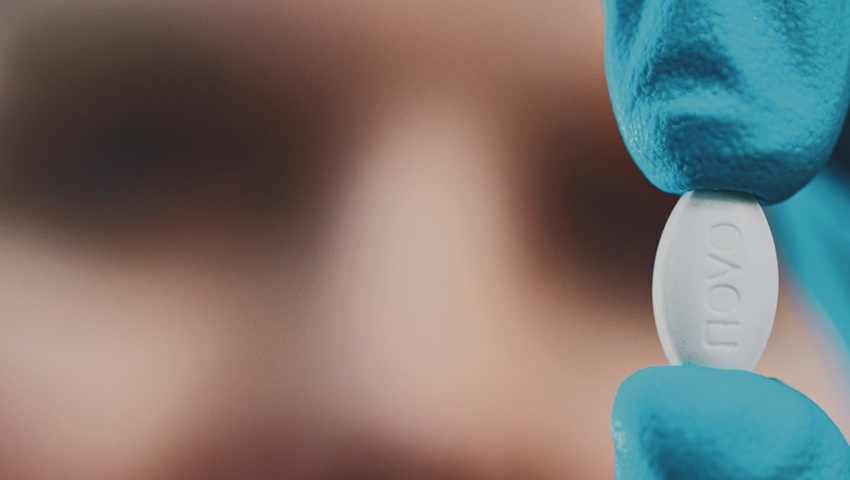
Antidiabetics that keep you trim
A new class of drugs for type 2 diabetes causes dramatic weight loss.
By Bertrand Beauté
Type 2 diabetes is a progressive condition, which usually gets worse with time. "In the early stages, the symptoms are subtle, sometimes even invisible. That means that many people are diabetics that don’t know it yet," Dr Karim Gariani says. "In Switzerland, it is estimated that 30% of type 2 diabetes patients do not realise that they are living with the disease." The rub is that diabetes leads to numerous complications, such as visual impairment, kidney failure and cardiovascular problems. The later type 2 diabetes is diagnosed, the more severe these complications will be and the more difficult it is to treat them.
"Today, people are recommended to be screened regularly for diabetes as of age 35. All it takes is a simple blood test," Dr Karim Gariani suggests. "If diagnosed early enough, diabetes is treated by eating a healthy diet, getting regular physical activity and possibly reducing excess weight."
When these lifestyle changes are not enough to durably control the patient’s glycaemia, non-insulin antidiabetic medication is prescribed (mainly metformin and sulphonylurea). Although these drugs produce excellent results in controlling blood sugar in the short term, the treatment generally becomes less effective in the long term, and blood sugar levels rise again. Another therapeutic agent is then added. And this is where major disruptions are taking place, with the development of glucagon-like peptide-1 (GLP-1) analogues.
"GLP-1s are revolutionising diabetes care"
Pierre Corby, Healthcare Equity Specialist at Union Bancaire Privée (UBP)
"GLP-1s are revolutionising diabetes care," says Pierre Corby, the Healthcare Equity Specialist at UBP. Like other antidiabetic drugs, GLP-1s enable better glycaemic control. But they have other advantages. "This class of drugs has shown a benefit in cardiovascular events, by reducing cardiovascular mortality, strokes and heart attacks," Dr Karim Gariani says. "Also, taking them has been associated with weight loss in some patients." Since type 2 diabetes is more common in obese people, this outcome has made them a preferred therapy.
Two drugs currently share this market. Ozempic, from Novo Nordisk, generated sales of €8 billion in 2022, up 77% compared to 2021. Its main competitor, Trulicity from the US firm Eli Lilly, generated $7.4 billion in revenue over the same period, up 15%.
The two pharmas are now eyeing a much bigger market than diabetes: obesity. In 2021, the Food & Drug Administration (FDA) approved Wegovy by Novo Nordisk to treat patients with overweight and obesity. Wegovy is the sister drug of Ozempic and contains exactly the same compound, semaglutide. It simply contains a higher dose than Ozempic, giving it unprecedented effectiveness – it is associated with a median weight loss of almost 15 kg in one year. Eli Lilly was quick to react. Approved in May 2022 for the treatment of type 2 diabetes, its new GLP-1, Mounjaro, should be cleared by the FDA for overweight and obesity in 2023. Taking it is said to be associated with weight loss of 20 kg in one year, although with some side effects, such as digestive disorders (nausea, diarrhoea and vomiting).
"GLP-1s give a comparable result to a gastric bypass – a surgical procedure performed to reduce the size of the stomach – but are less invasive for the patient and less expensive for healthcare systems," says Arelis Agosto, senior healthcare analyst at Global X ETFs. "It is very exciting to see how this new class of drugs will change the way diabetes is managed, with more emphasis on preventing the disease through managing obesity, as opposed to treating its symptoms."
460,000
Number of people with type 2 diabetes in Switzerland
"GLP-1s open up a whole new market. They bring hope to treat pre-diabetics, diabetics and obese people," says Pierre Corby, an analyst at UBP. "The most optimistic analysts predict that the GLP-1 market could be worth $90 billion a year by 2030, with $50 billion to $55 billion of that for obesity. For investors, pharmas with a GLP-1 in their portfolio look very attractive. The GLP-1 market is expected to grow by 20% to 30% per year for several years."
According to the World Health Organization (WHO), 650 million adults worldwide are obese and 1.9 billion are overweight. These figures should be correlated with the price of these new treatments. In the United States, type 2 diabetics on Mounjaro pay around $1,000 per month, and obese people who take Wegovy pay a monthly bill of $1,350.
The question remains, however, whether health systems will reimburse these drugs. "It’s the way it should be," Pierre Corby says. "Obesity is so expensive for society that I think these treatments will be covered."
